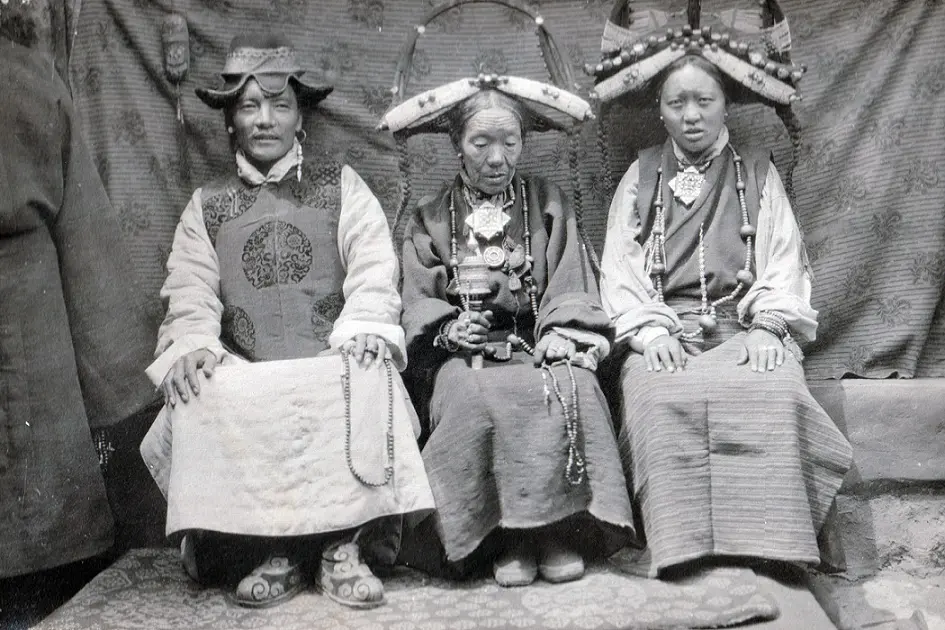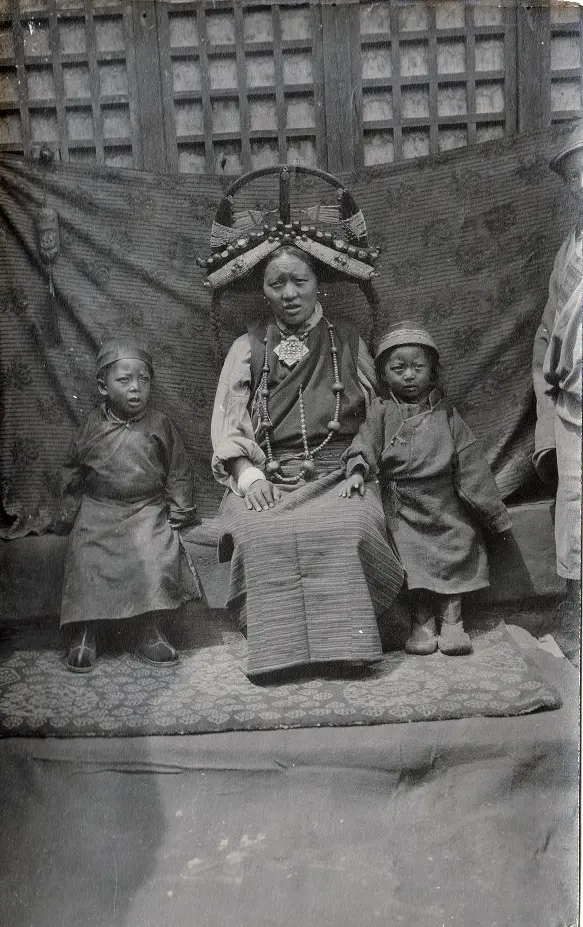“Just before dark a very beautiful and lofty peak appeared to the Southwards. Our drivers called it Chomo Uri (The Goddess of the Turquoise Peak) and we had many discussions as to what mountain this was. In the morning, after taking its bearings carefully, we decided that this could be no other than Mount Everest. We found out afterwards that the name, Chomo Uri, was purely a local name for the mountain. Throughout Tibet it was known as Chomolungma – Goddess Mother of the Country – and this is its proper Tibetan name.”
Charles Howard-Bury describes his first view of Mount Everest in 1921. Excerpt taken from Mount Everest – the Reconnaissance
Since September 2020, this blog has charted events in, and related to, Westmeath during the years 1919-1921. Of course, the War of Independence has been the dominant subject. We have covered topics such as the IRA, its organisation and its attacks against the Crown forces. We have examined the RIC and the British army and discussed their activities, including reprisals. We have seen how Cumann na mBan was an important source of IRA intelligence and we recalled the destruction by the Crown forces of the Westmeath Independent’s offices. We have looked at elections, politicians, kidnappings, land issues, house-burnings, spies - both real and imagined - county councils, and flying columns. We have followed a myriad of individual stories from Alice Ginnell to Sean MacEoin, from Mary McLoughlin Coughlan to Thomas Costello.
Among those stories from 1919-1921 is one that is unique to the Midlands. At a time when Irish people were living through the final months of the War of Independence, a small team left Darjeeling in northern India, heading for Tibet. The team, which had received special permissions from the Thirteenth Dalai Lama and the government of Tibet, had two primary goals: to map Mount Everest and to ascertain if it was possible for humans to reach the mountain’s summit. That team, whose progress was followed by newspapers worldwide, was led by Charles Howard-Bury, an Irish explorer and veteran of the First World War. Howard-Bury was raised in Charleville Castle, County Offaly, and he would live most of his life in Belvedere House, County Westmeath. Fluent in multiple languages and dialects, he had a long history as an explorer, visiting Tibet before the First World War and travelling through the Tian Shan Mountains in 1913.
The 1921 expedition undertook an arduous journey and one team member died on the route. Yet, the team achieved its goals, earning international acclaim. Later this month, an online exhibition will explore Howard-Bury’s role in leading that mission to Mount Everest. It is being held in conjunction with Belvedere House and with funding from the Department of Tourism, Culture, Arts, Gaeltacht, Sport and Media. The exhibition is curated by Historian in Residence Ian Kenneally, who visited Tibet in 2007, and contains numerous insights and contributions from Frank Nugent, the author and historian who was a leading member of the successful Irish expedition to Mount Everest in 1993.
Howard-Bury had a keen interest in Tibet, its people and their culture. His description of Tibet in the official account of the expedition – Mount Everest: the Reconnaissance – is, while a product of its time, mostly free of the dismissive attitudes that were prevalent among western commentators during that colonial era. Nor does he resort to the sham mysticism that suffuses many contemporary accounts related to Tibet, Nepal and the wider Himalayas. Instead, he provides numerous clear and detailed descriptions of his travels through the countryside and of his interactions with people (albeit mostly religious and administrative officials) along the way.
Below, we attach a couple of images taken in 1921, along with Howard Bury’s descriptions of the circumstances behind each photo. As we move closer to the launch of the exhibition, we will share more of these remarkable images from 1921, many of which are available in the Howard-Bury Collection in Mullingar Public Library.

The Depon [commander/governor] of Tingri Region, his wife and her mother.
Howard-Bury later described the circumstances behind this photo: ‘The Depon here, who was acting as the Governor of the place, was a nice young fellow and very cheery, and later on I got to know him very well and went over to his house and was entertained by him and his wife. He told me that the Tibetans still paid tribute to Nepal for all that part of the country, and that the amount they had to pay was the equivalent of 5,000 rupees per annum. The Nepalese kept a head-man at Tingri and another at Nyenyam to deal with all criminal cases and offences committed by Nepalese subjects when in Tibet. I found later on that the Tibetans were very frightened of the Nepalese, or of having any dealings with a Gurkha. I took photographs of the Depon's wife and all their children, and of his mother-in-law, which delighted them immensely; the wife at first was very shy of coming forward, but after many tears and protestations her husband finally induced her to be photographed ... The officials, as a rule, have a long ear-ring, 4 or 5 inches long, of turquoises and pearls, suspended from the left ear, while in the right ear they wear a single turquoise of very good quality. Nearly every one carries a rosary, with which their hands are playing about the whole day.’
(Photo courtesy of Marian Keaney/Westmeath Library Services)

Howard-Bury took this photo of the Depon’s wife and children:
‘The great semi-circular head-dresses that the women wear are usually covered with turquoises, and coral, and often with strings of seed pearls across them. Round their necks hang long chains of either turquoise or coral beads, sometimes mixed with lumps of amber. Suspended round the neck by a shorter chain is generally a very elaborately decorated charm box, those belonging to the richer or upper classes being of gold inlaid with turquoises, the poorer people having them made of silver with poorer turquoises...’
(Photo courtesy of Marian Keaney/Westmeath Library Services)
Content Last Updated/Reviewed: 13/09/2021